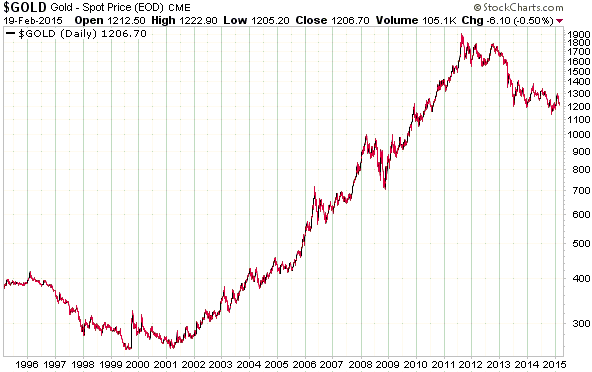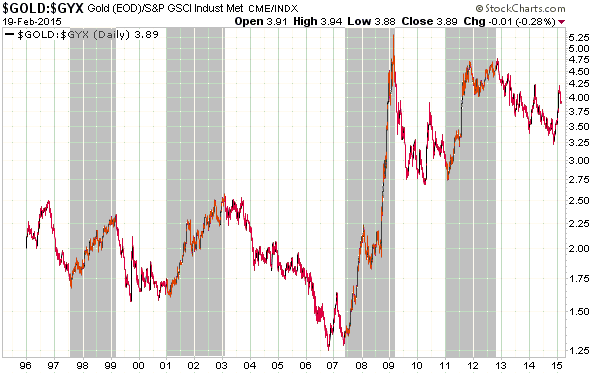During 2001-2011, buying exploration-stage gold stocks with large in-ground resources at low per-ounce valuations worked well. It worked well because ‘the market’ was often more concerned about leverage and quantity than economic viability and quality. Since 2012, however, buying an exploration-stage gold-mining stock on the sole basis that owning the stock gave you relatively low-cost exposure to a lot of in-ground gold has generally not worked well, to put it mildly. For the past three years, one of the most important rules to be followed by value-oriented speculators in gold-mining stocks has been: if it ain’t economic, it ain’t worth anything. This rule will probably apply for at least two more years.
Here’s a specific example to illustrate how the per-ounce market value of an exploration-stage gold-mining stock can be very misleading.
At the closing stock prices on Tuesday 17th March, I estimate that the 1M ounces of Measured-and-Indicated (M&I) in-ground gold owned by Dalradian Resources (DNA.TO) were being valued by the market at around US$80/ounce and that the 15.7M ounces of M&I in-ground gold owned by International Tower Hill Mines (THM, ITH.TO) were being valued by the market at around US$2/oz (taking into account the net cash of the companies). This simple comparison suggests that THM offers much better value than DNA.TO, but this isn’t the case.
Based on the economic studies that have been completed to date by each company, I think that DNA offers the better value. The reason is that DNA’s deposit is economically robust at $1200/oz whereas THM’s deposit would require a gold price of more than $2000/oz just to become economically viable. Any gold deposit that currently needs a gold price of at least $2000/oz to become viable will never be worth anything, because by the time gold rises to $2000/oz, which it very likely will within the next 5 years, the deposit that needed a price of $2000/oz to be viable in early-2015 will probably need a gold price of $2500-$3000/oz to be viable.
Now, it’s certainly possible that THM will come up with a totally different mine design that enables the project to become viable at a much lower gold price. However, that’s a long shot. Based on what’s known today about the economics of THM’s Livengood project, the project’s appropriate per-ounce valuation is zero.
I’m not saying that buyers of THM won’t make money. THM and other gold stocks with blatantly uneconomic deposits will be bought during gold rallies and are capable of delivering large percentage gains in quick time. For example, THM’s stock price more than tripled from its Q4-2013 bottom to its Q1-2014 peak and almost doubled from its December-2014 bottom to its January-2015 peak. That is, stocks like this can still work well as short-term trades, despite the reality that their mining assets aren’t worth anything.
The important thing is not to kid yourself that an extremely low per-ounce valuation necessarily means that you are getting an excellent deal.
 Print This Post
Print This Post












